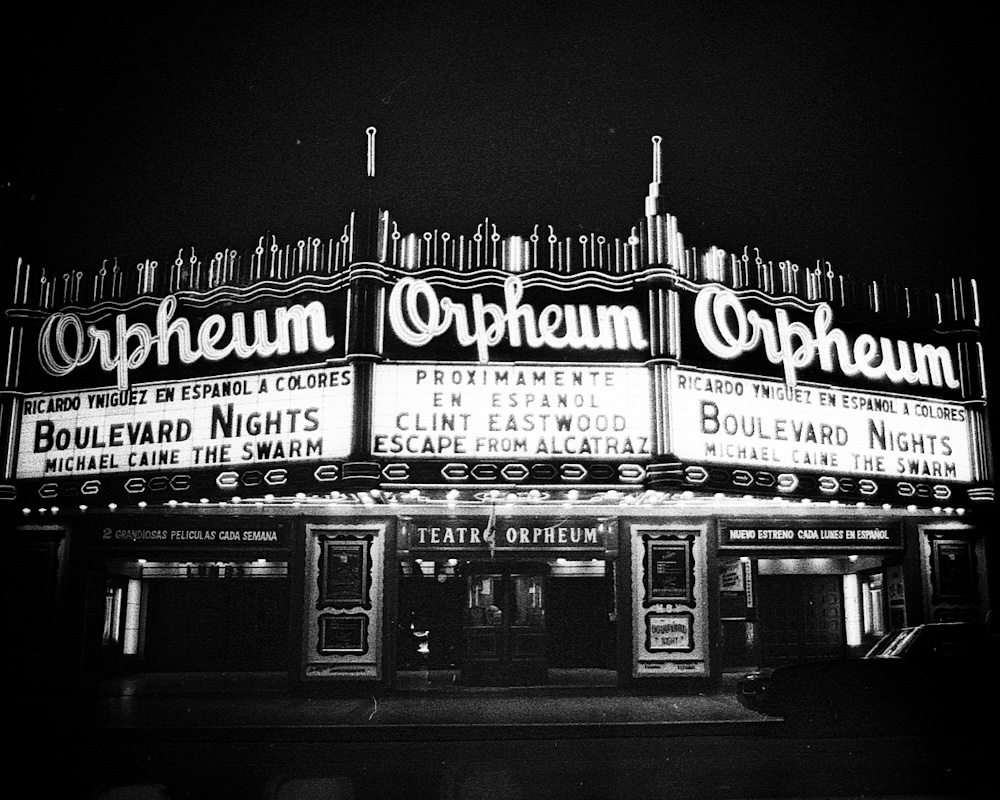L.A.X.
L.A.X. deals with slippery concepts of history, memory and how their traces mark the landscape of Los Angeles. To me, one of the most enduring founding myths of American society is that of non-history - all made possible by a formidable history-erasing machine. Nowhere is this more evident than on the continent's westernmost megalopolis. It is in Los Angeles that the process of effacing history has become a veritable industry.
Camera: Rol Murrow, Frank Tomasulo. Sound: Alex Del Zoppo. Voices: Maria Laplace / Barbet Schroeder / Bulle Ogier / Pascale Ogier /Beverly Hemberger. 90 minutes (1980)
WATCH L.A.X. here:
.jpg) .
.  .
. .jpg)
Fabrice Ziolkowski's brilliant essay film prowls its way from a bird's-eye view of the Southland in its urban-suburban splendor to the seamier street-level perspective more common to the city dweller. In the process, Ziolkowski's voyeuristic black-and-white camera lingers inquisitively over the Venice canals, the Dorothy Chandler Pavilion and other iconographic landmarks, while a roundelay of different narrators, reading the work of Halberstam, Godard, Chandler, et al., fill us in on the city's hidden (and often unsavory) history. The film's expansive timeline stretches from the days of Franciscan monks and Indian villages to the irrigating of the San Fernando Valley, the decay of downtown and the ongoing, trenchlike divisions between races and economic classes. The end result is, on one level, a snapshot of Los Angeles at the moment the film was made (1980) and, on another, a record of the city at all moments in all times - past, present and yet to come. A clear influence on subsequent works ranging from Pat O'Neill's Water and Power to Thom Andersen's recent Los Angeles Plays Itself, the film is a seminal achievement in its own right and a valuable contribution to that canon of works about the great, tangled myth of our improbable desert metropolis.
Scott Foundas - LA Weekly
L.A.X. (1980)
East 5th Street towards Harbor Freeway
much of what this and the previous volume on LA look to explore, is the way in which a city is portrayed at different times, in different locations and by different film-makers. L.A.X. could be seen as one of the definitive ‘city symphony’ films on the subject, inasmuch as what we experience throughout is a layered investigation of the historical and social erasure that often accompanies a place’s transformation over time. LA’s desire to continuously reinvent itself takes on a particular significance when we remember that the city often exists most luminously onscreen – LA being the home of Hollywood and the ‘Dream Factory’. But as with dreams, the reality lurks somewhere beneath, and Ziolkowski’s film reminds us of the landscapes that have disappeared, the people that have been displaced and the cultures that have been supplanted while the bulldozers and cameras relentlessly roll on. Long tracking shots of familiar vistas from above and
at street level are accompanied by varied narration adding personal and historical context – hinting more at what is no longer there than what we can see. We turn from Stanford Avenue onto 5th Street in one of the film’s longest scenes. Shot from inside a moving car and accompanied by Robert Johnson’s devastatingly bleak ‘Love in Vain’; shops, pedestrians, parking lots and restaurants fill the frame as we pass by Skid Row – known for
its homeless population since at least the 1930s and one of the film’s only locations to have changed very little in the subsequent near half-century – a telling reminder that some of the city’s problems can’t simply be airbrushed from our screens. Gabriel Solomons
